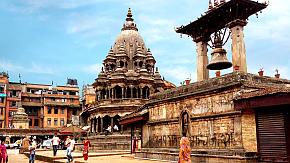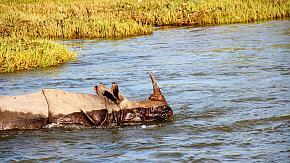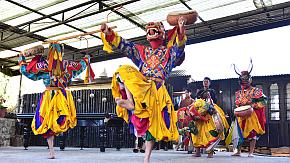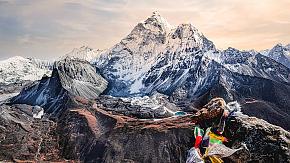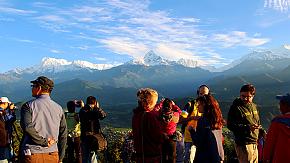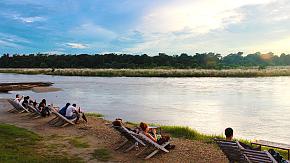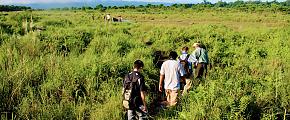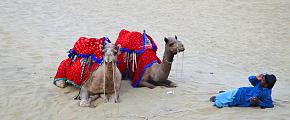8 Fun Facts About Nepal: Interesting Things That May Surprise You
Situated in the south of the Himalayas, Nepal is a country full of diverse ethnic groups, various festivals, breathtaking scenery and rich culture. Most of Nepali traditions are mysteries for foreign tourists. Here are some interesting things that must surprise you.
Open-Air Cremations at Pashupatinath
In Kathmandu, the Pashupatinath Temple has been a sacred site for Hindus for over 1,600 years, attracting countless devotees who come to honor Lord Shiva. Nepal is a predominantly Hindu country, and cremation according to Hindu traditions is an important ritual after death. The most famous cremation sites in Kathmandu are the stone platforms along the Bagmati River, just outside the temple.
For Hindus, death is seen as a transition to the next stage of life, and the ritual is performed with great care. Before cremation, the body is washed with river water, wrapped in a white or yellow cloth, and sprinkled with flowers, rice, and other auspicious items. The head is placed facing the Himalayas, considered the home of the gods, while the feet point toward the river. Firewood is arranged on the cremation platform, and the body is placed on it for cremation. Afterward, the ashes are released into the river, with the belief that the soul will continue its eternal journey.
Some areas of the cremation sites are open to respectful visitors, though photography is only permitted in designated spots and should always be approached with sensitivity.
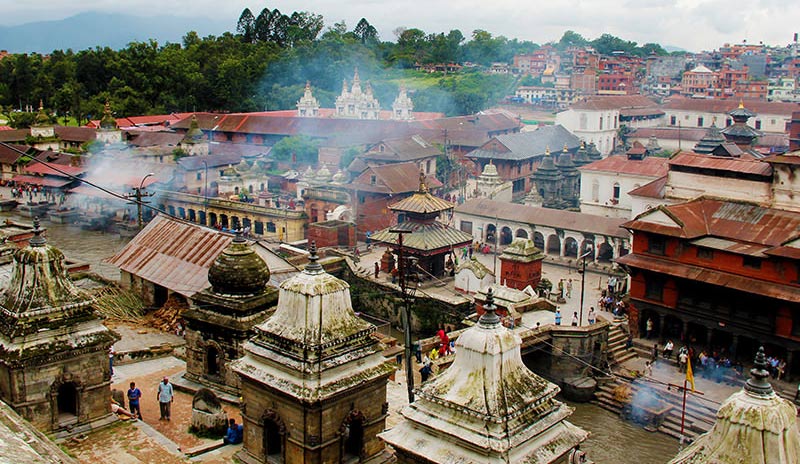 The Pashupatinath Temple
The Pashupatinath Temple
The "Living Goddess" Kumari
Nepal is home to the unique tradition of the Living Goddess Kumari, regarded as the human embodiment of the goddess Taleju. Originating in the 17th century, this practice continues in Kathmandu and several other major cities.
The selection of a new Kumari is conducted by royal priests through a series of special tests. Once chosen, she is worshipped as a goddess until she reaches puberty. After her tenure, former Kumaris may face challenges transitioning to ordinary life. To support them, the Nepali government provides living allowances, arranges weekly family visits, covers marriage dowries, and ensures educational opportunities during their service. Some former Kumaris even pursue higher education and obtain university degrees..
Aerial Adventures Over Everest
Nepal is a paradise for outdoor enthusiasts, offering activities like rock climbing, canyoning, ziplining, and paragliding. For those seeking extreme thrills, scenic flights and paragliding near Mount Everest provide unforgettable experiences.
Mount Everest, soaring 8,848 meters above sea level, is the highest peak in the world. While you won't literally skydive from its summit, you can take off from nearby airfields or launch sites to enjoy breathtaking aerial views of the Himalayas. The panorama of snow-capped peaks, deep valleys, and glaciers, combined with the rush of flying, makes for one of the most exhilarating adventures in Nepal.
Whether you're an adrenaline junkie or simply want to see Everest from a unique perspective, these high-altitude flights and paragliding experiences are sure to leave lasting memories.
 A view of the Himalayas
A view of the Himalayas
Tips for Skydiving and Paragliding in Nepal
Health Requirements: These activities are suitable only for healthy adults. People with high blood pressure, heart conditions, or significant overweight should avoid them.
Best Time to Go: November is ideal for clear skies and calm winds. Consider staying an extra day in case of bad weather to avoid missing your flight.
What to Wear: Loose, comfortable clothing and sneakers are recommended for safety and ease of movement.
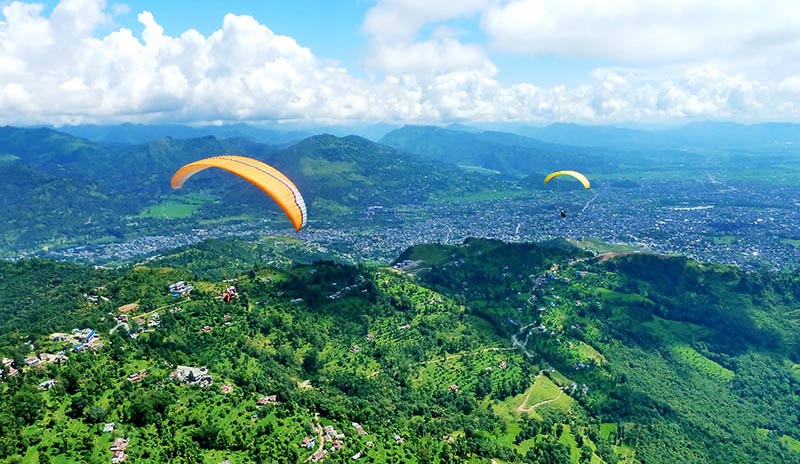 Paragliding through the valley of Pokahara
Paragliding through the valley of Pokahara
Dogs' Big Day
Every dog has its day, but in Nepal they enjoy something truly unique - Kukur Tihar, or the Day of Dogs. This celebration takes place on the second day of Tihar, a five-day Hindu festival that honors humans' relationship with animals and gods. According to sacred texts, dogs are not only loyal companions but also guardians and guides. Many Nepalese believe that dogs serve as the messengers of Yamaraj, the god of death, who escort souls to the afterlife. Honoring them is seen as a way of pleasing the divine.
On this day, both pets and strays receive special treatment. People place bright marigold garlands around their necks and decorate their foreheads with a red tika made of colored powder, rice, and yogurt - symbols of respect, purity, and blessings. Police dogs, recognized for their service, also take part in liturgical ceremonies. Of course, the part dogs seem to love most is the food: plates filled with fruit, cookies, eggs, meat, milk, and even homemade sweets.
If you are a dog lover, witnessing Kukur Tihar in Nepal is an unforgettable experience that shows just how deeply this culture values its four-legged friends.
Drinking Yak Blood in Mustang
While Nepali cuisine in most major cities is fairly typical, in the remote Mustang district of north-west Nepal, a rare traditional festival involves drinking fresh yak blood. Organized by the local Yak Keepers Group, this ritual is observed twice a year, usually in April–May and July–August. The blood is collected carefully without harming the animals, reflecting centuries-old local customs.
Locals believe that consuming yak blood can help with digestive issues such as acidity and gastritis, as yaks graze on medicinal highland herbs including yarshagumbu, jatamasi, and panchaaunle. This practice is extremely rare and confined to remote communities, making it a striking example of Mustang's unique cultural heritage.
Symbolic Marriages: The Bel Fruit and the Sun
Among the Newar ethnic community in Nepal, some girls participate in unique symbolic ceremonies before their formal marriage. These rituals are not universal, but they reflect centuries-old cultural beliefs about protection, purification, and blessing for future married life.
Bel Bibaha (Marriage to the Bel Fruit)
Around the ages of seven or eight, a Newar girl may undergo a symbolic marriage to a Bel fruit (wood apple). The fruit must be ripe and undamaged, as it is believed to influence the fortune of her future marriage. Though the ceremony is symbolic, it is performed with the grandeur of a formal wedding, and the main purpose is to ensure that her eventual marriage is auspicious. Today, not all Newar families continue this tradition.
Gufa Rakhne (Marriage to the Sun)
Girls who have participated in Bel Bibaha may later celebrate a second symbolic marriage to the Sun, usually within the first half of the month following their first menstruation. During this ritual, the girl spends 11 days in a dark room, with food provided by elder female relatives. On the 12th day, she bathes before sunrise, applies oil to her body, and is led blindfolded to a rooftop platform. When the sun rises, her blindfold is removed, and she performs rituals of sun worship. This purifying ceremony symbolizes her transition into adulthood, preparing her for her formal marriage in the future.
Elopement Traditions in Nepal
Elopement generally refers to a young couple leaving their families to marry privately, but in Nepal, some ethnic communities such as the Gurung and Limbu have unique traditions around it. During communal gatherings, young couples who fall in love may leave the event together to formalize their relationship. Afterwards, they seek the blessings and approval of their parents before holding a formal wedding ceremony.
This tradition highlights the diversity of cultural practices in Nepal and offers insight into alternative approaches to courtship and marriage within these communities.
Nepali Yarshagumbu
Nepal's Yarshagumbu, a fungus similar to Cordyceps Sinensis, is highly valued as a rare medicinal herb with reputed health benefits. It grows naturally in high-altitude regions and national parks, particularly thriving during the rainy season.
While not everyone in the Himalayas is involved in harvesting it, collecting Yarshagumbu has long been an important seasonal activity for local communities. During peak season, some schools and colleges in harvesting regions may close temporarily as students and locals head to the mountains in search of this precious fungus.
This unique natural resource highlights both the ecological richness of Nepal and the traditional livelihoods of Himalayan communities.
These fascinating cultural practices are just a glimpse of Nepal's rich traditions and breathtaking natural beauty. For travelers seeking a unique experience, Nepal offers countless memorable adventures. Contact Odynovo to create a personalized itinerary and explore this extraordinary country - Nepal won't disappoint.
What Our Clients Say
Explore the latest verified reviews of Odynovo's travel services on Tripadvisor, Google, Trustpilot, Product Review and more trusted platforms.

